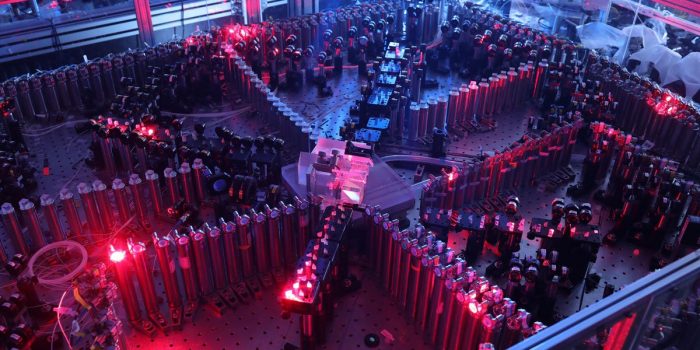Chinese researchers have introduced a new code-breaking algorithm that could render mainstream encryption powerless within years.
The team was led by Professor Long Guilu of Tsinghua University. They proclaimed that a modest quantum computer constructed with currently available technology could run their algorithm, South China Morning Post (SCMP) reported on Wednesday.
The “new algorithm could dramatically reduce the scale of a practical quantum computer to 372 qubits – even less than that of Osprey [most powerful quantum processor in the world],” said the researchers in a non-peer-reviewed study.
The new technique can massively reduce the size of a practical quantum computer to 372 qubits, noted the SCMP report.
The new algorithm is called sublinear-resource quantum integer factorization (SQIF). It can decipher data encrypted with RSA-2048.
Shor’s algorithm is a mathematical tool developed by American physicist Peter Shor in 1994. It says that, in theory, they make a quantum computer much faster than a classical computer in code-breaking, performed inefficiently in real quantum circuits, according to Long’s team.
The researchers showed the feasibility of SQIF by using a tiny 10-qubit superconductive quantum computer at Zhejiang University in Hangzhou to break a 48-bit-long encryption key.
The team claims that SQIF is “the most qubit-saving factorization algorithm to date” and that quantum computers capable of handling hundreds of qubits are on the horizon.

“Our study shows great promise in expediting the application of current noisy quantum computers and paves the way to factor large integers of realistic cryptographic significance,” claimed the group.
The study “is something to take seriously,” according to American cryptographer and computer expert Bruce Schneier, who has testified before the U.S. Congress on matters relating to information security.
On January 3, Schneier, the head of security architecture at Inrupt, said on his blog, “It might not be correct, but it’s not obviously wrong.”
But “there’s the nagging question of why the Chinese government didn’t classify this research,” he questioned.
“It seems to me that a miracle would be required for the approach here to yield any benefit at all, compared to just running the classical Schnorr’s algorithm on your laptop,” Aaronson wrote in a blog.
“This is one of the most actively misleading quantum computing papers I’ve seen in 25 years, and I’ve seen many,” he said, doubting the authenticity of the study.

Lawrence Gasman, the founder and president of the website Inside Quantum Technology, which covers advances in quantum technology, referring to Long’s claim, warned that “if it is true, it is catastrophic.”
However, “If an idea is interesting, it is probably wrong,” Gasman said, quoting his former MBA teachers.
The controversial paper was first posted on the scholarly article website arxiv.org last month.


